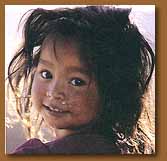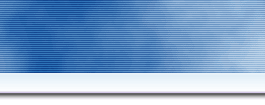Visitors
Guide

Time
GMT plus five hours and forty-five minutes
Geography
Nepal is a landlocked country in the Himalayan mountain
range. It is 800km long and 200km wide and is bordered by
India to the east, south and west, and the People's Republic
of China to the north. In the longitudinal 200km, the terrain
changes from glaciers along the Tibetan border to the flat
jungles of the Terai, barely 150 metres above the sea level.
Climate
The narrow lowland belt known as the terai has a warm climate
with monsoon rains in summer. The high mountains are permanently
snow-covered above 4,800 metres, while the middle mountain
area has a temperate climate.
Average high temperatures range between 17 and 30 degrees
Celsius (C), with low temperatures between 1 and 19 degrees
C. May to September is the monsoon season; the wettest month
is July with 328mm of rainfall.
Dress codes
If travelling outside Katmandu, it is respectful to wear
the local dress - baggy trousers and a long-sleeved tunic.
Entry requirements
Passports
Required by all except nationals of India.
Visa
Visas are required by all except nationals of India. Tourist
visas for certain areas are issued on arrival for visits
of seven days. Applications for other visas should be made
well in advance. For business visas you need to telephone
or write directly to The Director General, Department of
Immigration, Tridepi Marg, Thamel, Kathmandu, Nepal (tel:
00-97-71-412-337/418573). A letter of authorisation from
the relevant Nepali ministry is required, as is a photocopy
of the back and front pages of the visitor's passport and
a copy of the visitor's last Nepal visa if less than five
years old. In exchange, seven application forms will be
sent to the visitor by the ministry, which should be returned
with seven photos. If accepted, the visa will be stamped
on the visitor's passport at Kathmandu airport. There are
one- or five-year multiple entry visas available.
Currency
advice/regulations
There are no limits on the amount of foreign currency which
may be imported or exported, although visitors must declare
their currency upon arrival. Only nationals of Nepal and
India may import Indian currency. Only exchange foreign
currencies through banks or authorised foreign exchange
dealers. Always retain foreign exchange receipts as they
may be needed to change excess Nepalese rupees. There may
be limits on the amount which can be re-exchanged (usually
only 10 per cent of the total amount may be converted).
Exchange rates are advertised in English dailies such as
The Rising Post.
Customs
Personal effects are duty-free. Importation of certain goods
may be prohibited, such as beef, animal fat, arms, explosives
and wireless radio transmitters; cameras and reasonable
quantities of film, for personal use. Except for trade with
India, which is possible only through authorised dealers,
all imports and exports are under licence.
The exporting of items over 100 years old, which are considered
valuable for cultural or religious reasons, is prohibited.
Items such as sacred paintings or statues must be certified
by the Department of Archaeology.
Health (for
visitors)
Mandatory precautions
Vaccination certificate for yellow fever if travelling from
an infected area.
Advisable
precautions
Vaccinations for diphtheria, tuberculosis, hepatitis 'A'
and 'B', Japanese 'B' encephalitis, meningitis, polio, tetanus,
TB, typhoid. Anti-malarial precautions advisable. Rabies
is a risk.
It was reported that around 270 people had died from encephalitis
between July and September 2000.
Hotels
There is a 225-room, conference-class Hyatt Regency hotel
in Kathmandu. The main tourist season is Oct-Nov. It is
advisable to book well in advance.
Credit cards
Credit cards such as American Express, Mastercard and Visa
are widely accepted in major hotels, restaurants and shops.
Public
holidays
Fixed dates
1 Jan (Unity Day), 29 Jan (Martyrs' Day), 18 Feb (Democracy
Day), 8 Mar (Women's Day), 10 Mar (Holi Festival), 10 Apr
(Teachers' Day), 14 Apr (New Year's Day), 24 Oct (UN Day),
7 Nov (Queen Aishworya's Birthday), 9 Nov (Constitution
Day), 29 Dec (King Birendra's Birthday).
Variable
dates
Shivaratri (Feb-Mar), New Year's Day (Apr), Lord Buddha's
Birthday (May), Festival of Rain God (May-Jun), Durga Puja
(one week Oct), Festival of Lights (one week Nov).
Working
hours
Banking
Sun-Thu: 1000-1430. Fri: 1000-1200. Some open on Saturday
in Kathmandu.
Business
Sun-Thu: 1000-1600/1700; Fri: 1000-1500.
Government
Sun-Thu: 1000-1600/1700; Fri: 1000-1500.
Shops
Sun-Fri: 1000-1900.
Working
hours
Weights and measures
Metric system (local units also in use).
Social customs/useful
tips
The traditional form of greeting is called namaste
and is performed by placing the palms together at chest
height and bowing slightly. Note that some people, particularly
Nepalese women, may prefer not to shake hands with people
of the opposite sex. Always use your right hand to shake
hands or to pass anything on. Remove shoes before entering
homes and temples.
Getting
there
Air
National airline: Royal Nepal Airlines.
Main airport: Kathmandu Tribhuwan International (KTM), 6km
from Kathmandu.
Airport tax: Domestic departures NRs100; international departures
NRs500 for residents travelling to SAARC countries and NRs600
for others travelling to SAARC countries; NRs900 for residents
travelling to non-SAARC countries and NRs1,000 for others
travelling to non-SAARC countries); not applicable to infants
only.
(Bangladesh, Bhutan, India, Maldives, Pakistan and Sri Lanka).
Surface
There are 22 access routes from India, with rail service
between Raxaul and Birganj, linking to Kathmandu coach services;
rail access also via Jogbani. It is permitted to enter Nepal
by road from China (Tibet). Nepal can also be approached
from Kakarbhita in the east. Birgunj is the most popular
entry point for visitors.
Getting
about
National transport
Air: The only way to reach many parts of the country is
by air. There are 44 airports. Royal Nepal Airlines operate
domestic services to most major towns, including daily flights
to Bharatpur, Biratnagar, Janakpur, Nepalgunj, Meghauli,
Pokhara and Simra, with some curtailment of services likely
during monsoon season to certain mountain regions. There
are also several private domestic airlines which serve major
destinations.
City transport
Taxis: Metered taxis can be hailed in Kathmandu. Private
taxis available through hotels may cost more.
Car hire
Driving is on the left. International driving permit required,
or a temporary licence is available from local authorities
on presentation of national licence. Chauffeur-driven car
hire is available.
top |






